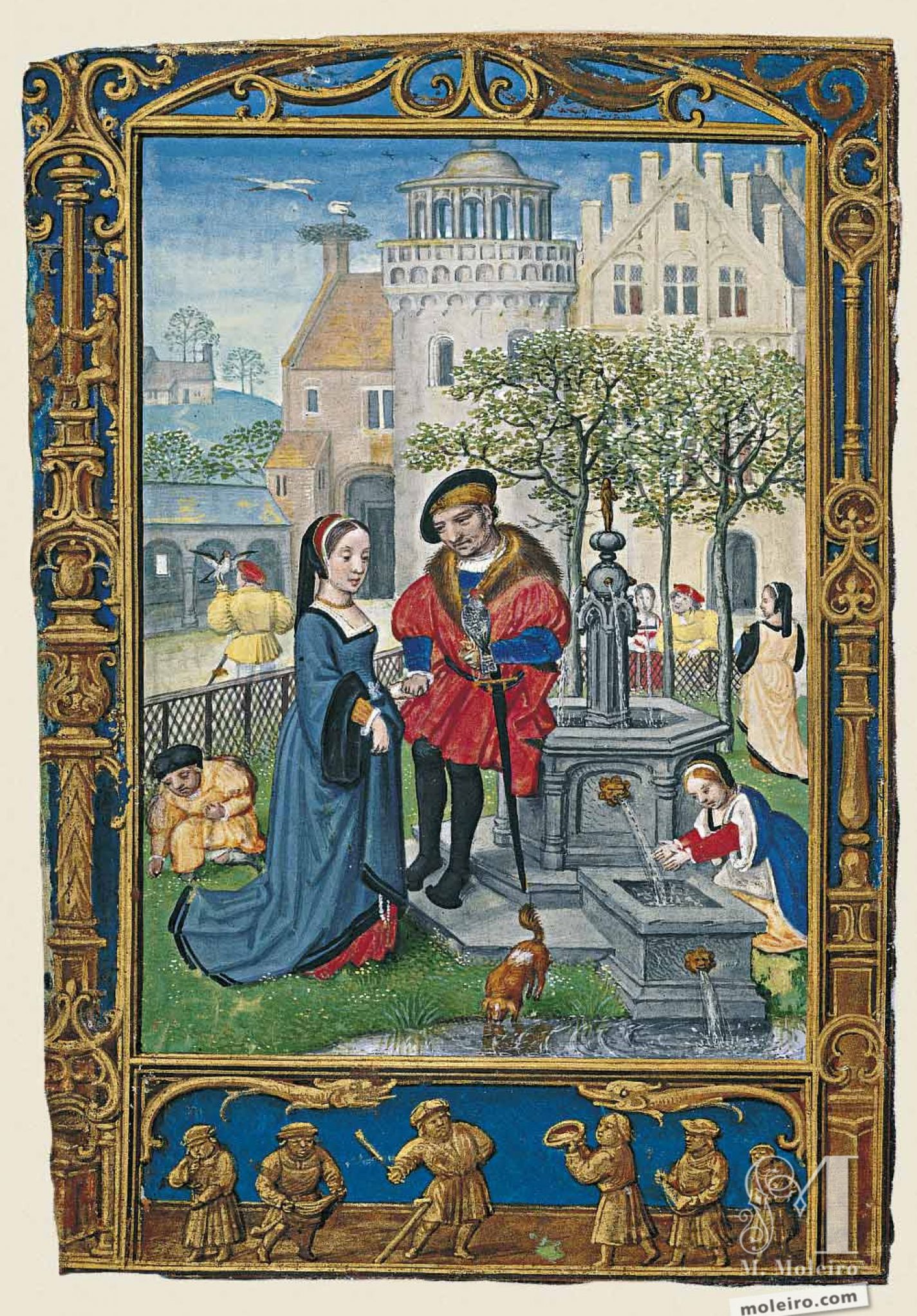The main scene depicts a garden, possibly in a town, surrounded by a low fence containing three trees, whose crowns are rather sparse because of their recent blossoming, grass, flowers and a hexagonal fountain topped by a bronze-colour statue of a discreet Venus pouring water into a hollow in the garden, where a dog drinks. Courting is taking place in the garden: the girl wears a loose-fitting blue gown, revealing a red petticoat underneath when raised, with a wide, square neckline with a ruff. The woman gives her left hand to a gentleman who takes it in his right. This gesture has several meanings: it indicates equal social standing, for both are aristocrats; it is also an unusual welcome indicating the acceptance or possession of the other person; and finally, it is also a symbol of a tacit agreement of commitment between the two persons. Furthermore, the gentleman gazes at her whilst she lowers her eyes shyly. The man wears French garb consisting of a square-necked gown over a fastened shirt with a high, ruffled-edge collar, a skullcap and hat, long hose and a very short sort of footwear that appeared in the last quarter of the 15th century. A hooded falcon is perched on his left fist and a sword hangs from his belt. Flanking the couple are a girl dressed, as was fashionable until virtually the end of the 19th century, like an adult, stretching her hands out towards the stream of water, and a boy, also dressed like an adult, apparently gathering flowers in the meadow. A lady strolls about the garden alone in the background. Outside the garden are a couple of sweethearts talking and a man with a falcon perched on his left hand. In the background are several Flemish buildings, a pair of storks nesting on a chimney, and a fanciful tower topped by a classic niche unrelated to the northern architecture of that period. Depicted in the background is a promontory with a longa domus and trees.
The bottom margin of folio depicts several children playing with a bat and ball, as in the top strip of the border in the Mayer van den Bergh Breviary (f. 3r), forerunners of which are to be found in certain fourteenth-century drolleries.
Carlos Miranda García-Tejedor
Doctor in History
